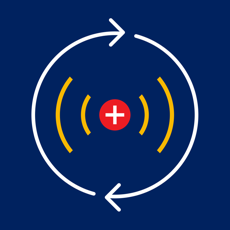Tubal Blockage and Polycystic Ovarian Syndrome (PCOS): Causes, Symptoms & Treatments
What Is Tubal Blockage?
Tubal blockage, or tubal occlusion, is the mechanism by which tubal ligation procedures prevent pregnancy. It blocks sperm from reaching the egg and prevents eggs from reaching the uterus.
When tubal sterilization is performed, tubal blockage is intentional. It can also occur due to diseases, resulting in involuntary infertility. Whether intentional or caused by disease, tubal blockage can often be corrected with reconstructive tubal surgery.
Causes of Tubal Blockage
- Tubal sterilization
- Pelvic inflammatory disease (PID): Inflammation of fallopian tubes (salpingitis), possibly involving ovaries (oophoritis) and pelvic peritoneum (peritonitis)
- Endometriosis
- Congenital abnormalities: Malformations of uterus and fallopian tubes, usually causing blockage near the uterine end
Treatments for Tubal Blockage
There are two primary approaches to treating infertility due to tubal blockage:
- Tubal Surgery: Best performed by specialized gynecologic reproductive surgeons.
- In Vitro Fertilization (IVF): Replaces fallopian tube functions with laboratory fertilization and embryo transfer.
Since IVF’s advent, reconstructive tubal surgery skills have declined, with IVF becoming more popular among reproductive endocrinologists.
Tubal Surgery to Correct Tubal Blockage
There are three main surgical techniques:
- Tubal Anastomosis: Removing blocked segments and reconnecting the open ends. Used when blockage is between uterus and fimbrial end.
- Tubal Implantation: Bypasses proximal blockage by creating a new uterine opening and inserting healthy tube segment.
- Salpingostomy: Creating a new opening near the fimbrial end to correct distal blockage caused by PID or endometriosis.
Benefits and Risks of Tubal Surgery vs. IVF
Benefits of tubal surgery: Usually done once, allowing pregnancy at any time after. Main risk: increased tubal (ectopic) pregnancy.
IVF advantages: Avoids surgery, though expensive and requires ovarian stimulation hormones. Risks include ovarian hyperstimulation and multiple pregnancies. There is also a small risk of tubal pregnancy if tubes are open.
Tubal Clipping or Removal (Salpingectomy) Before IVF
Performed to prevent harmful tubal fluid from flowing into the uterus during IVF, especially in cases of severe hydrosalpinx. It can improve pregnancy rates but may compromise ovarian blood supply and be complicated by pelvic adhesions.
Polycystic Ovarian Syndrome (PCOS)
PCOS is a common reproductive disorder marked by irregular menstrual cycles, excessive body hair, acne, oily skin, weight problems, and infertility. It’s linked to high insulin levels and excess testosterone, causing ovulation disorders.
Women with PCOS are also at risk for conditions like Type 2 diabetes. Managing insulin levels can restore menstruation and reproductive function.
What Does PCOS Mean?
PCOS is an endocrine disorder with symptoms including irregular or late periods, lack of ovulation, acne, oily skin, excess body hair (face, chest, below navel), and weight gain. Some also develop dark patches on the skin (acanthosis nigricans) due to high insulin.
What Happens in PCOS?
Women normally have small amounts of androgens (male hormones). PCOS causes excess androgen production by the ovaries, increasing free testosterone and leading to non-ovulation and related issues.
PCOS affects 5-10% of women of childbearing age and is a leading cause of infertility. About 20% of women with normal cycles may have polycystic ovaries on ultrasound.
How Is PCOS Diagnosed?
Diagnosis involves physical examination for symptoms, ultrasound to detect polycystic ovaries, and blood tests to measure hormone levels and insulin resistance.
Excessive or Prolonged Bleeding Causes
Due to lack of ovulation, continuous estrogen exposure thickens the uterine lining, causing heavy irregular bleeding.
Follow-Up After Delivery
Women with PCOS should continue medical follow-up due to risks of heart disease, diabetes, abnormal lipid profiles, and uterine cancer.
Weight and PCOS
Weight loss improves ovulation, fertility, and lowers diabetes risk. Lifestyle changes including reducing fat and sugar intake, and exercising (e.g., 40 minutes brisk walking daily) are recommended.
PCOS Treatment Options
Treatment depends on your goals: fertility or symptom management.
If Fertility Is a Concern
- Clomiphene citrate to induce ovulation
- Insulin sensitizers (e.g., metformin) for better ovulation
- Gonadotropins (injectable hormones) if oral treatments fail
- Laparoscopic ovarian drilling to improve ovulation
Metformin Use in PCOS
Metformin lowers insulin and improves egg development, especially in women with high insulin or diabetes. It’s recommended only for select patients, not as blanket therapy.
If Fertility Is Not a Concern
Hormonal therapy regulates menstrual cycles, and antiandrogens treat excess hair and acne. Lifestyle modifications are essential for overall improvement.
Top 10 FAQs About Tubal Blockage
1. What is tubal blockage?
Tubal blockage, also known as tubal occlusion, refers to the obstruction of one or both fallopian tubes, preventing sperm from reaching the egg or the fertilized egg from reaching the uterus, often causing infertility.
2. What causes tubal blockage?
Common causes include pelvic inflammatory disease (PID), endometriosis, previous surgeries, tubal sterilization, and congenital abnormalities of the reproductive tract.
3. Can tubal blockage be treated?
Yes, tubal blockage can be treated through surgical procedures such as tubal anastomosis, salpingostomy, or tubal implantation. Alternatively, In Vitro Fertilization (IVF) bypasses the fallopian tubes altogether.
4. What are the symptoms of tubal blockage?
Tubal blockage typically has no noticeable symptoms. Many women only discover it during infertility evaluations or when experiencing ectopic pregnancy.
5. How is tubal blockage diagnosed?
It is diagnosed through imaging techniques such as hysterosalpingography (HSG), laparoscopy, or ultrasound. These tests assess whether the fallopian tubes are open and functional.
6. Can I get pregnant if I have blocked fallopian tubes?
If only one tube is blocked, natural conception may still be possible. If both are blocked, options like tubal surgery or IVF may be needed to achieve pregnancy.
7. Is IVF the best option for tubal blockage?
IVF is a widely used option because it bypasses the fallopian tubes entirely. However, for some women, tubal surgery may restore natural fertility and be more cost-effective long term.
8. What are the risks of tubal surgery?
Risks include infection, scarring, ectopic pregnancy, and failure to restore fertility. The skill of the surgeon and the extent of blockage influence the success rate.
9. Does tubal blockage increase the risk of ectopic pregnancy?
Yes, women with partial blockages or damaged tubes are at higher risk of ectopic (tubal) pregnancy, especially after surgery or IVF.
10. Can lifestyle changes help with tubal blockage?
While lifestyle changes can’t unblock fallopian tubes, maintaining a healthy weight, avoiding infections, and seeking early treatment for pelvic issues may reduce the risk of tubal damage.






